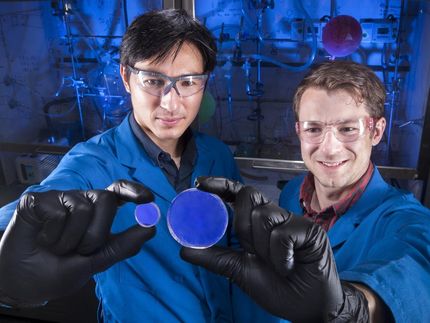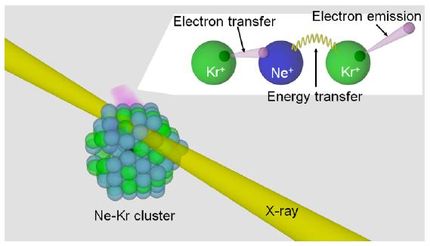New technique 'sees' radioactive material even after it's gone
A new technique allows researchers to characterize nuclear material that was in a location even after the nuclear material has been removed - a finding that has significant implications for nuclear nonproliferation and security applications.
"Basically, we can see nuclear material that is no longer there," says Robert Hayes, lead author of paper describing the work and an associate professor of nuclear engineering at North Carolina State University. "For example, we could identify and characterize a dirty bomb based on samples taken from a room the bomb was in a year ago.
"This is a valuable tool for emergency responders, nuclear nonproliferation authorities and forensics, because it allows us to get a rough snapshot of the size of a radiation source, where it was located, how radioactive it is, and what type of radioactive material it is," Hayes says.
The technique takes advantage of the fact that radioactive material changes the arrangement of valence electrons - or outer electrons - in insulator materials, such as brick, porcelain, glass - even hard candy. Basically, radiation displaces electrons at defect sites in the crystalline structure of these materials.
By taking samples of multiple materials in a room, applying conventional radiation dosimetry techniques, and evaluating how the electrons at those defect sites are organized, researchers can determine the presence and strength of any nuclear materials that were in that room.
"If the samples were taken at regular intervals in a grid pattern, the relative radiation dose profile can be used to triangulate where in the room the source was located, in three dimensions," Hayes says. "It can also provide a very rough idea of the physical size of the source, but that depends on various factors, such as how close the source was to the materials being sampled."
By taking a core sample of the insulating material, and measuring the radiation dose at various depths in the material, researches can also ascertain what type of radiation source was present. This is possible because different radioactive materials have characteristic distributions of gamma rays, X-rays, etc., and each type of energy penetrates materials with different strength.
"This is not extremely precise, but it does allow us to answer important questions. For example, distinguishing between different kinds of nuclear material such as naturally occurring, medical, industrial, and 'special' nuclear materials - the latter being used for nuclear weapons," Hayes says.
"This is a proof of concept," Hayes says. "We're now focused on exploring its detection limitations along with spatial and energy resolution, and how to make use of this approach moving forward.
"But this is a big deal for nuclear nonproliferation efforts, because it means you can't handle nuclear material in secret anymore," Hayes adds. "It means the world is now densely blanketed by low-resolution integrating gamma-ray spectrometers, so we can always go back and measure what was present. There's no hiding."
Original publication
Other news from the department science

Get the analytics and lab tech industry in your inbox
By submitting this form you agree that LUMITOS AG will send you the newsletter(s) selected above by email. Your data will not be passed on to third parties. Your data will be stored and processed in accordance with our data protection regulations. LUMITOS may contact you by email for the purpose of advertising or market and opinion surveys. You can revoke your consent at any time without giving reasons to LUMITOS AG, Ernst-Augustin-Str. 2, 12489 Berlin, Germany or by e-mail at revoke@lumitos.com with effect for the future. In addition, each email contains a link to unsubscribe from the corresponding newsletter.

























































